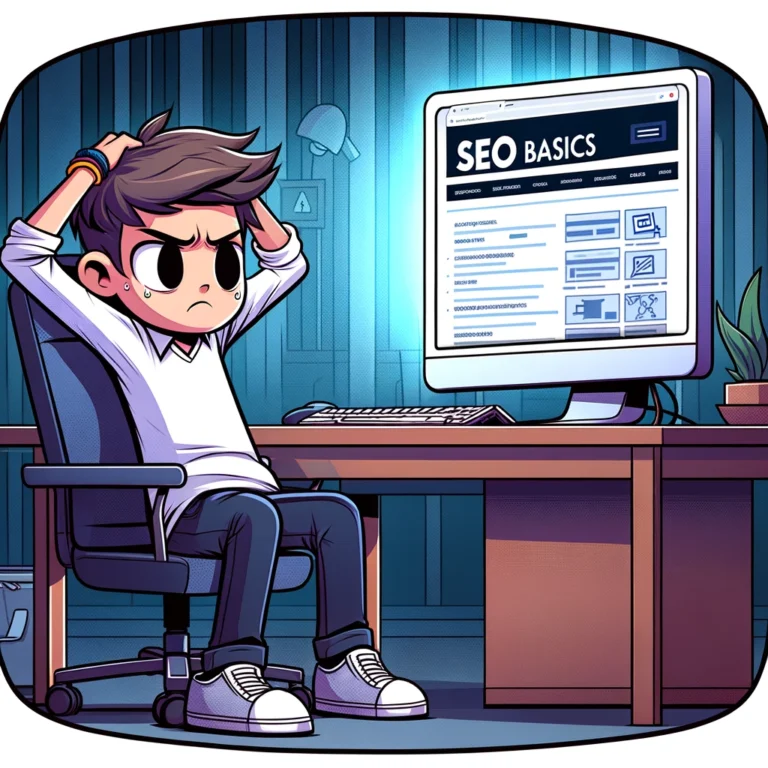In today’s digital landscape, having a website that adapts to various devices is not just an added bonus—it’s essential. This concept, known as responsive design, ensures that your site provides an optimal experience on any device, from desktops to smartphones. But responsive design isn’t just about user experience; it’s also a critical component of Search Engine Optimization (SEO). In this article, we will explore why responsive design is pivotal for SEO, how it impacts search rankings, and practical steps you can take to implement it effectively.
What is Responsive Design?
Responsive design refers to a website’s ability to adjust seamlessly to fit the screen size and orientation of any device. This involves dynamically resizing text, images, and other elements to ensure the website is equally functional and aesthetically pleasing on a desktop, tablet, or mobile phone. The goal is to eliminate the need for separate design and development phases for each device type, which can save time and resources.
The Importance of Responsive Design in SEO
Google and other search engines aim to provide the best user experience, which is why they favor websites that cater to mobile users. Since the introduction of mobile-first indexing, Google predominantly uses the mobile version of the content for indexing and ranking. Here’s why responsive design is essential for good SEO:
- Improved User Experience: Websites that are easy to navigate and interact with naturally keep visitors engaged longer. This increased engagement reduces bounce rates and signals to search engines that your website is valuable, thereby improving your rankings.
- Faster Page Speed: Responsive sites use modern performance techniques such as responsive image display and optimized media queries that help speed up loading times. Search engines prioritize faster websites since speed is a known ranking factor.
- Reduced Duplicate Content: Without responsive design, you might end up creating separate sites for mobile and desktop. This can lead to duplicate content issues, which negatively affect your SEO as search engines might not determine which content is more relevant.
- Boost in Mobile Search Ranking: Since search engines are focusing on mobile-first indexing, having a responsive design is crucial to ranking well in mobile searches.
Implementing Responsive Design
Implementing responsive design involves several technical and design aspects. Here are key steps to ensure your website is effectively responsive:
Start with a Mobile-First Approach
Design your website for small screens first. This approach helps you focus on the essential features of your site, ensuring they’re implemented cleanly and efficiently before adding more complex elements for larger screens.
Use Flexible Grids
A flexible grid-based layout uses relative units like percentages, rather than fixed units like pixels. This flexibility allows the layout to adjust fluidly across different screen sizes, improving the responsiveness of your design.
Implement Responsive Media Queries
Media queries are a cornerstone of responsive design. They allow your website to apply different styles based on the characteristics of the device it’s being viewed on. For example, you can specify different stylesheets for phones, tablets, and desktops.
Optimize Images
Ensure that your images are responsive so that they scale properly on all devices. Use modern formats like WebP, which provide high-quality results at smaller file sizes, speeding up your page load times.
Prioritize Accessibility
Accessibility and responsive design often go hand in hand. Ensure that your website is navigable and readable on all devices, which not only aids those with disabilities but also translates to a broader audience reach.
Testing Your Responsive Design
Once you’ve implemented responsive design, it’s crucial to test how it performs across different devices. Use tools like Google’s Mobile-Friendly Test to see if your site meets the necessary mobile standards. Additionally, regularly check your site’s loading times and user interaction metrics to identify and rectify any potential issues that could affect your SEO.
Responsive design is no longer optional—it’s a necessity. By ensuring your website can adapt to any device, you enhance user experience, improve site performance, and significantly boost your SEO efforts. Start implementing responsive design today to not only meet the current standards but also future-proof your website for new devices and technologies.
Remember, SEO is a continuous effort. Keeping up with best practices in responsive design will help you maintain and improve your search rankings over time. With the right approach, your site will attract more visitors, provide a better user experience, and achieve a higher conversion rate.

Enhancing SEO Through Advanced Responsive Techniques
While the basic implementation of responsive design is a great starting point, to truly excel in SEO, it is essential to delve into more advanced techniques. These strategies not only refine user experience but also further boost your site’s visibility and ranking in search engine results.
Implement Dynamic Serving
Dynamic serving is a technique where the server responds with different HTML and CSS on the same URL depending on the user agent requesting the page. This method allows you to tailor content specifically for mobile or desktop environments without creating duplicate content, which is beneficial for SEO.
Use Scalable Vector Graphics (SVG)
SVGs are ideal for responsive designs because they maintain clarity at any size and on any device, unlike pixel-based images that can become blurry when resized. SVGs are also generally smaller in file size compared to other image formats, which can improve page load times—a key factor in SEO.
Focus on Touchscreen Friendliness
In the mobile-first world, touchscreen readiness is crucial. Make sure buttons, links, and navigation menus are of adequate size and properly spaced to accommodate fingertip navigation. Misconfigured touch elements can lead to a frustrating user experience and potentially increase bounce rates.
Optimize Typography Responsively
Responsive typography ensures that the text on your website is legible and aesthetically pleasing across all devices. Use relative units like percentages or viewport units for font sizes. Also, consider the line height and spacing to enhance readability and usability on small screens.
Leverage Browser Caching
Implementing browser caching can significantly reduce load times for repeat visitors on your site. This technique allows browsers to store large files locally in the cache, so they do not need to be reloaded fully each time a user visits your site.
The Impact of Responsive Design on SEO Metrics
The benefits of responsive design extend beyond just fitting your site onto a mobile screen. By improving various user interaction metrics, responsive design directly impacts SEO:
- Lower Bounce Rates: A responsive site provides a better user experience, which tends to keep visitors on your site longer, reducing bounce rates.
- Higher Engagement Metrics: Responsive design improves readability and navigation, which can lead to increased page views and longer session durations.
- Improved Conversion Rates: A site that works well across all devices is more likely to convert visitors into customers, subscribers, or followers.
Monitoring and Updating Your Responsive Site
To maintain and improve the effectiveness of your responsive design, continuous monitoring and updates are necessary:
Regularly Check Device Compatibility
New devices and resolutions are constantly being released, and periodically testing your website on these new platforms ensures that it remains compatible and responsive.
Update Content Layouts
As content changes and evolves, the layouts may need tweaks to ensure they are still performing well on all devices. Keep an eye on design trends and user feedback to guide these updates.
Monitor SEO Performance
Use analytics tools to track how changes to your responsive design impact your SEO performance. Look at metrics like organic traffic, search rankings, and keyword performance.
Final Thoughts
Responsive design is a critical aspect of modern SEO strategy. It goes beyond simple aesthetics and plays a vital role in enhancing site usability, improving speed, and ensuring content is accessible across all devices. By adopting a comprehensive responsive design strategy and staying updated with the latest trends and technologies, you can ensure that your website not only survives but thrives in the competitive digital landscape.
By following the guidelines and advanced techniques outlined in this article, you’re well on your way to creating a website that not only ranks well but also provides a seamless user experience. Remember, the goal is to create a flexible, fast, and accessible website that meets the needs of all users, no matter what device they are using.



